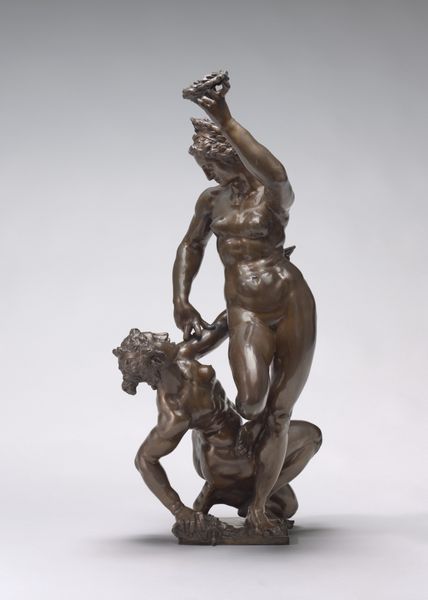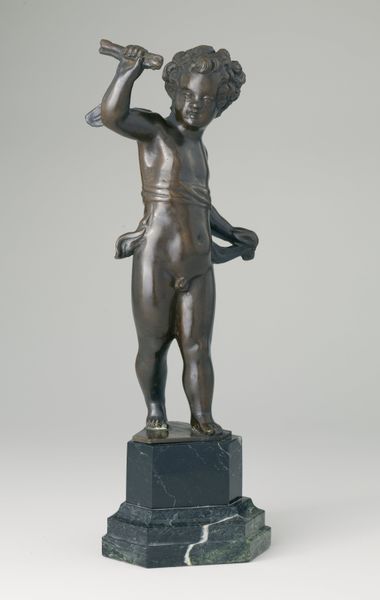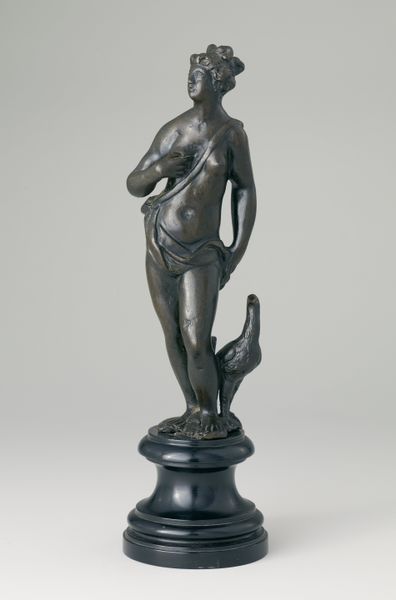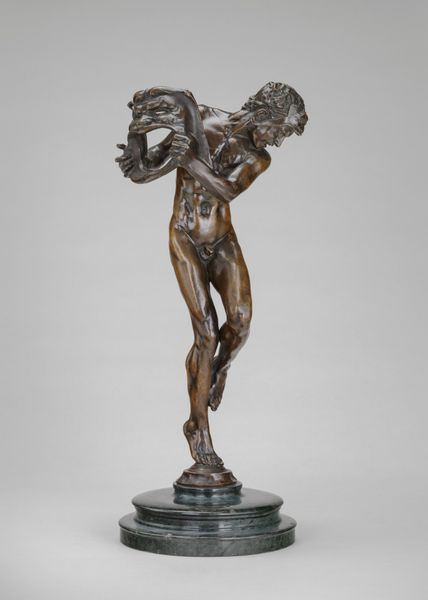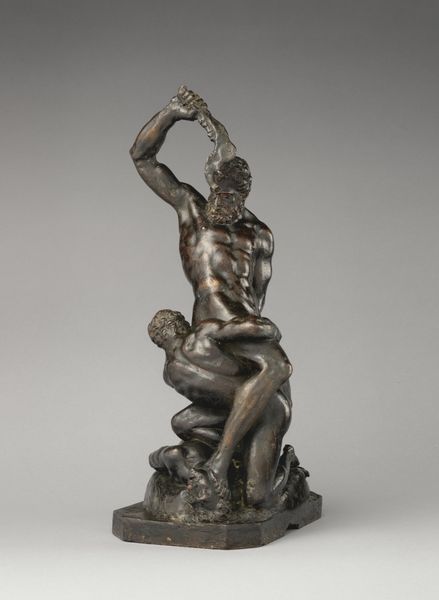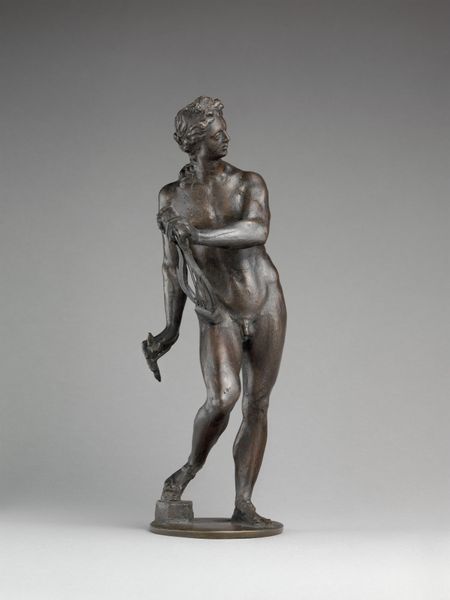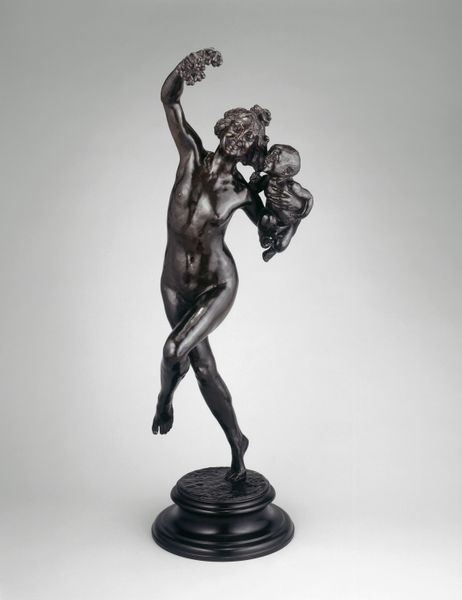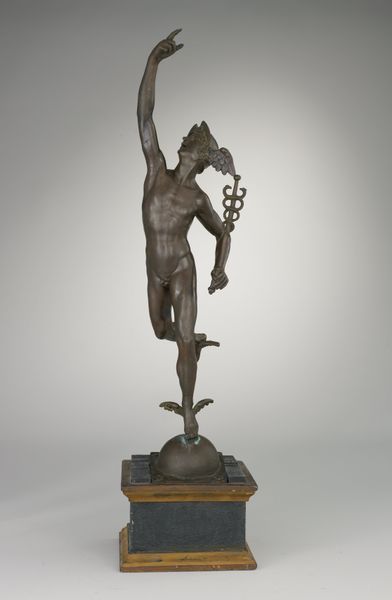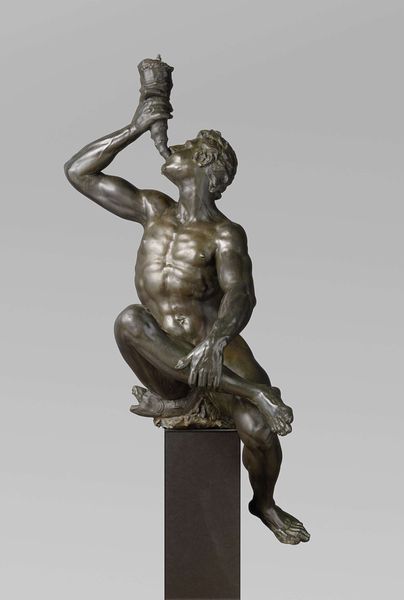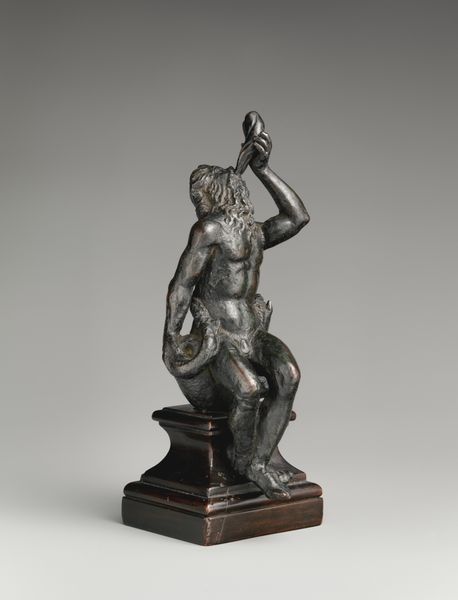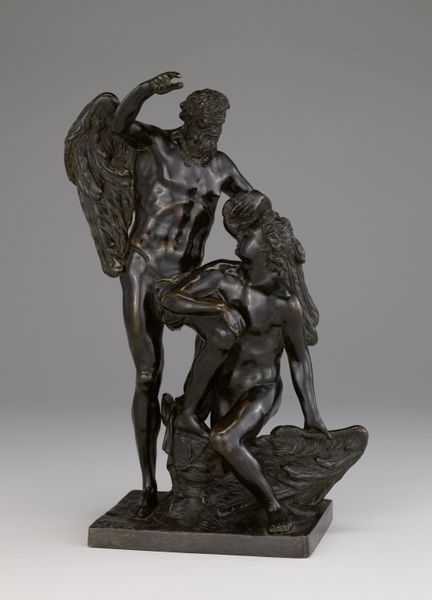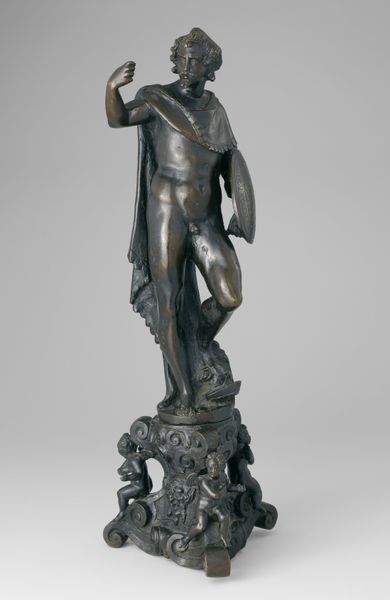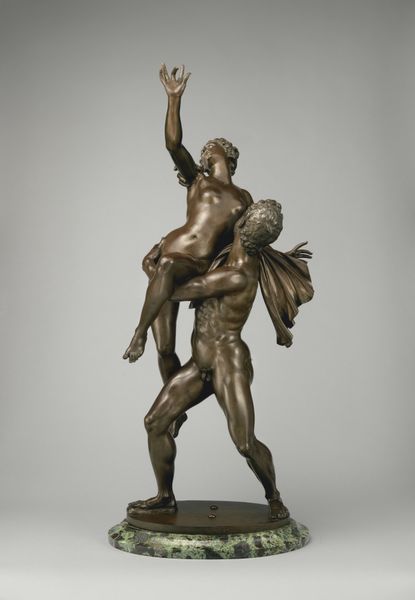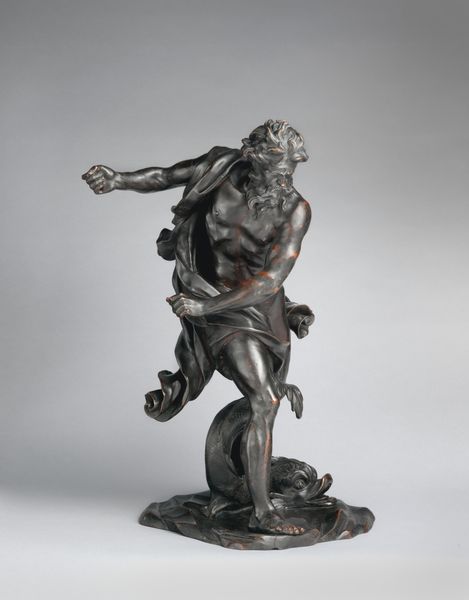
bronze, sculpture
#
baroque
#
sculpture
#
bronze
#
figuration
#
sculpture
#
history-painting
Dimensions: 21 5/8 x 9 3/4 x 8 in. (54.9 x 24.8 x 20.3 cm) (on base)
Copyright: Public Domain
Curator: Let’s take a look at this striking bronze sculpture, "Hercules Slaying the Hydra," dating back to the 18th century. You can find it here at the Minneapolis Institute of Art. Editor: It's intensely dramatic! The swirling forms and Hercules’ dominating pose… it speaks volumes about struggle and triumph, all captured in that dark, gleaming metal. Curator: Exactly. This piece exemplifies Baroque dynamism. The mythological subject would have appealed to the artistic tastes of the era. These mythological depictions offered commentary on the power structures and political climate. Hercules, the ultimate symbol of strength and heroism! Editor: Thinking about the bronze itself… imagine the foundry, the laborious process of casting. Each pour, each detail carefully refined. Bronze wasn't just a material, but a statement about the patron's wealth and influence. The artist transformed base materials into this timeless artifact through sheer skill. Curator: Indeed. The piece also shows a fascination with antiquity that resurfaces periodically in Western art, and with it a very complex and loaded understanding of virtues. Hercules stands in a powerful, elevated stance, which adds to this heroic representation that, in some ways, attempts to influence its contemporary audiences. Editor: Right, and it also embodies the labor division. The person who designed the sculpture most likely wasn't involved in its actual crafting, and perhaps the wealthy patron gets most of the public recognition while all that intensive craftwork gets largely erased from our memories. Who were the people toiling in the workshop, meticulously filing and polishing the bronze to achieve this incredible surface? Curator: A very good question that makes us reflect on the collective efforts required for artworks such as this. We cannot forget either the intellectual currents behind it. Pieces like these contribute to larger conversations about moral responsibility, ambition, and how power is attained and exerted. Editor: Definitely food for thought. Looking closely allows us to appreciate not just the art but also the material reality of its making and reception. Curator: Absolutely. It is essential to consider these artifacts within broader dialogues that reveal the forces that molded and shaped societies and individuals. Editor: A potent reminder that behind every so-called masterpiece there's a whole story about exploitation and, also, sheer creative collaboration!
Comments
No comments
Be the first to comment and join the conversation on the ultimate creative platform.
